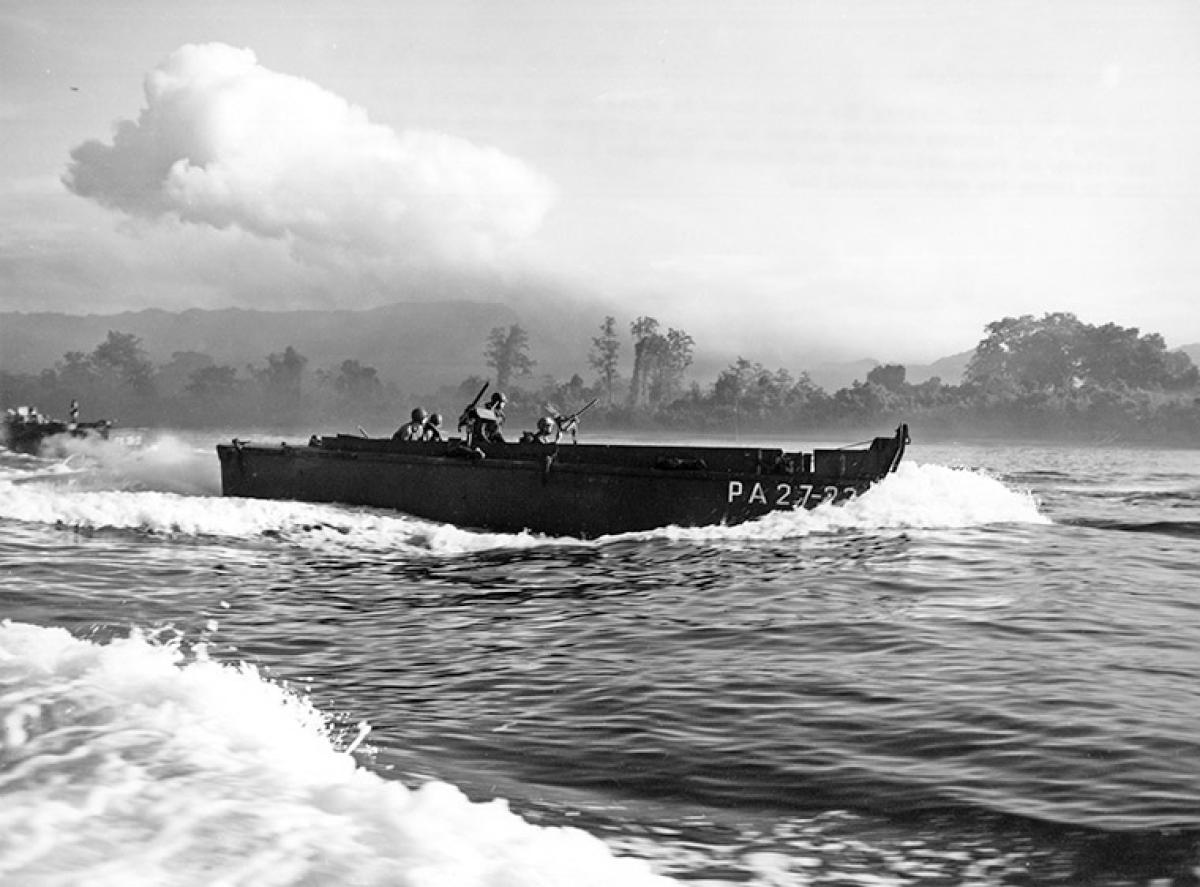Andrew Jackson Higgins once publicly declared that students attending the U.S. Naval Academy learned “fancy dancing, football, fencing, boxing—things like that,” but that as officers in the Navy, they did not know “a goddamn thing about small boat design.” It does not take a great deal of imagination to guess how this declaration was received by its intended audience, but one might wonder if there was any truth in it. Some compelling evidence can be gleaned from another utterance, made shortly after World War II by former Supreme Allied Commander General Dwight Eisenhower, who said “Andrew Higgins . . . is the man who won the war for us.”
As Allied forces gathered strength in their British bastion, preparing for an eventual return to the European continent, it was clear that the traditional method of invasion—seizing enemy ports—was out of the question. Modern weaponry and heavy fortifications made frontal assaults into the narrow confines of hostile ports suicidal in nearly every instance.
In the Pacific, Tokyo lay beyond vast reaches of a gargantuan ocean dotted with tiny but strategically vital islands seen both as stepping-stones and as formidable obstacles.
In both theaters it was abundantly clear that before Allied armed forces could even think about engaging the Wehrmacht in Europe or striking at the heart of the Japanese Empire, they must first cross many beaches. Great numbers of personnel, tanks, trucks, jeeps, artillery, ammunition, fuel, and other supplies would have to be moved from the sea onto hostile shores, and to accomplish this, vast numbers of suitably capable landing craft would be needed.
Ordinary boats are generally designed to stay in the water, but “amphibious” ones must not only be seaworthy, they must be able to marry up with land as well. They must combine shallow drafts with heavy capacity and be able to travel far enough up a beach to safely land troops and heavy equipment while retaining the ability to withdraw. They must include such oddities as bows that open up to provide efficient access to the objective, ramps that allow vehicles to go ashore without submerging, engines powerful enough to overcome the clinging friction of wet sand, and the means to protect propellers from flotsam, sandbars, coral reefs, and other potentially destructive obstacles.
Enter Andrew Jackson Higgins.
What Higgins lacked in diplomacy he made up for in tenacity, timing, and entrepreneurship. In 1938, he owned a small boatbuilding business in Louisiana that employed 75 workers. By the end of 1943 he owned seven plants employing more than 25,000 workers. He employed blacks as well as whites, women, people with disabilities, and seniors—all paid equal wages based entirely on job skills. But these precocious hiring practices were only one manifestation of his innovative thinking.
One can surmise that Higgins was neither a fancy dancer nor a fencer, but he knew boats, and he was able to solve the many amphibious problems faced by the Allies. He designed and built (in great numbers) several different types of landing craft, the most famous of which was the LCVP (Landing Craft, Vehicle, Personnel). Higgins produced more than 12,000 of these versatile craft that ultimately participated in every major amphibious landing in the war and came to be popularly known as “the Higgins Boat.”
Little wonder that Eisenhower attributed so much to Higgins and felt compelled to also remark that when Higgins died, his coffin should be in the shape of a landing craft. When Higgins did pass in 1952, he was interred in a more conventional coffin, but his contributions were later commemorated when, in 1987, Avondale shipyard delivered the USNS Andrew J. Higgins (T-AO-190).



